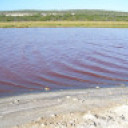Different swell types "Primary" "Secondary" "Tertiary"


Simplest way to explain is that the primary swell is the swell train which theoretically produces the largest 'surf size'. Our surf size calculation uses size, period and direction within a proprietary algorithm. We then order the swell trains based on a decreasing order of surf size.
The wave model actually outputs up to six swell trains however it's very rare for more than three swell trains to be concurrently influencing a single surf spot. So, for aesthetic reasons we have limited our main website displays to the top three swell trains.


And here's a classic example of where the model sometimes falls over. In the example below (Central Coast, today), the model has split the swell trains because of the unusual synoptic pattern, which is creating a broad spread of swell directions as the swell size and period increases from a local source.
See how the 'surf size' goes from 2-3ft at 6am, to 2ft at 12pm and 4-5ft at 6pm? The 'drop' to 2ft at 12pm is because the model has split the 6am 1.7m@6s S/SE swell train (which is building, under this synoptic pattern) into two swell trains: one out of the S (1.3m@6.9s) and one out of the E/SE (1.2m@6.3s). From this information, our model then picks the 'largest' swell train to use as a reference for the overall surf size.
Then at 6pm, both swell trains have merged back into a single swell train from the SE (2.4m@6.9s).
What SHOULD have happened was the 1.7m 6am swell forecast build to (say) 2.1m at 12pm and 2.4m at 6pm, which would have translated to a 2-3ft 6am surf height building to 3-4ft at 12pm, then building to 4-5ft at 6pm. That would be more inline with the expected swell trend today.
Unfortuately, we do see this splitting of the swell train every now and then, and there's not much we can do about it - it's an inherent characteristic of the WW3 model. We have theorised a couple of possible solutions to this but they're still under development.
Anyway, just a little more insight as to how our surf forecast model works and interprets the data.



Indo-dreaming thats a good read in the link above, cheers.
Interesting rules BOM use when forecasting secondary swell train "When the primary swell is less than 4 metres, second swell is included if it is greater than 1 metre and from a different direction." etc etc.
Its pretty good that SN show any second or third swell train, no matter what size, interesting as the swell up this ways is tiny but from 3 different directions and a beach I check out which is usually pretty poor had fun waist to chest high peaks running everywhere.
It will be interesting for you to use SN's swell forecasts, all 3 swell trains and keep an eye on the different little reefs and beaches down there, some correlation might be real useful in the long run...?




Don, the difference is the direction swinging 15 degrees and this has bumped the swell just over our 2-3ft threshold.
If you looked at the graph for the same period you would see that the jump in size was way less noticeable with a slight climb in height Saturday from Friday (more so than a jump from 2ft to 2.5ft).


thermalben wrote:Simplest way to explain is that the primary swell is the swell train which theoretically produces the largest 'surf size'. Our surf size calculation uses size, period and direction within a proprietary algorithm. We then order the swell trains based on a decreasing order of surf size.
The wave model actually outputs up to six swell trains however it's very rare for more than three swell trains to be concurrently influencing a single surf spot. So, for aesthetic reasons we have limited our main website displays to the top three swell trains.
10/10 for that one thermalben ! Isn't it weird though, I remember one beautiful summer afternoon about 6 years ago. I'll never forget it. I was feeling great, there was one of those sultry, hazy light on shore breezes coming in at my local regular spot. I looked out - no waves apart from a tiny well shaped inner reef " wave " lapping the edge. Damn it, with no one out there, I threw on the boardies for a paddle and a swim. Without exaggeration - from the time I paddled out to where I'd hoped I just might be lucky - I most certainly was. From that moment on I had the summer session of my life. A 1ft to 2 ft fun right - literally EVERY time. I surfed better than ever, and with every wave, the moment I got back out to the take off point , another wave would come along. It was literally one wave after the other, hardly any wait time for the whole session. There must have been eyes on me for an hour because the spot ended up with about 8 guys out there. Karma ? Who knows.


I have a question. What happens when two swells from different directions in deep open ocean pass each. Will there be an instantaneous increase in swell when the two swells coincide? So for example, way out in the South Pacific, you have a E'ly swell and a S'ly swell passing through each other. Just as one E'ly swell passes through the S'ly swell, will the combined instantaneous swell be bigger than each of the individual swells. Kinda like when backwash comes back at a wave approaching the shoreline, the back wask pushes the wave approaching the shore up. So based on this I think I have answered my own question but was just curious to know for open ocean swells.


Yes, that's right Don.


Thought so. Thanks Craig.


That's essentially what a rogue wave is.


Seeing we are on the subject can anyone explain what happens when a swell from the north collides with a swell from the south . Whatever direction I just said nth / sth as example )


Nothing really, they pass through each other without any major effects.


Really , ben do u think there would be any loss of energy ?


What are the major factors in consistent swells with frequent sets?
It seems ealy in some swells they can be inconsistant but other times consistant early on or something else.
Do wind gusts and things like that have anything to do with sets and the frequency or is it just more intense storms produce more frequent sets?
(besides long period swells i mean- like how indo is often slower than swWA but similar period)


Period would be the major factor I think , also if you are getting point blank aimed swell or just the side / shoulder batch . most surfers dont seem to understand period & the correlation between close or distant swell source it seems . And why would they . Not sayin u groundy but I mean beware , theres so many misunderstandings that it can be confusing to try & understand what u hear . Much better to learn the science facts .


How did you learn caml? Mainly just from reading and studying weather maps? I've learnt so much from this website. I have to read things a few times so they sink in but it's been great for learning new things.


Oh From old legoinds at their local breaks


Swellnet has rich knowledge indeed


Camel - the literature and research states that there is negligible loss of energy when swell trains of opposing directions "pass through" each other. From my personal observations, I think this is broadly true - there have been occasions when it seems that swells have lost size or energy due to their interaction with secondary swell trains, but in truth there could have been a wide range of contributing factors leading to the apparent smaller surf.
However, the vast majority of research around swell energy has been done without a focus on breaking waves, and their surfability. In my opinion, there is still an enormous body of research work yet to be done on various parameters in and around the surf zone and deep water ocean. I have a lot of personal theories that I'd love to spend some time researching, but simply don't have enough time to do so.


Big fat A frame


Thanks ben , interesting


Was interested in the Whakatane vs the Mahia Peninsula forecast?
Whaka has 4-6ft NE swell solid green bar, green arrow pointing NE..
Mahia has 4-6ft NE swell half green and half yellow with both arrows yellow and green pointing NE?
Why is this, just curious.


That's because Whakatane faces NE, so gets the full brunt of the NE swell energy.
But we've aligned Mahia Peninsula to the SE, so it's giving the forecast for open beaches (facing SE) in the green, with yellow showing there'll be more size at north-east facing beaches.
You can click Mahia, and that'll show similar forecasts to Whakatane because it's in the bay facing NE.



Also in regards to consistency.
The further away from the swell source you are, and as Cam said, if it's not aimed towards your coast and you're getting side-band energy then the less consistent it is.
This usually means longer-period swells from distant storms are very inconsistent, but that isn't always the case.
If the storm is real strong and right off the coast, like the last Hawaii swell you'll get large long periods but also high consistency.


Ok cool as Craig, I didn't realise you had Mahia Peninsula as the SE coast, makes sense now;)
Be some nice waves around that region this week.


Yeah, it's gonna cook for a week!



What is the difference between "Primary swell" "Secondary swell" and "Tertiary swell"?
How is it decided which is which?
And can there be more than three swells in the mix?
Ive just assumed primary swell is largest followed by secondary swell then tertiary, but ive noticed at times the Secondary swell can be a bit bigger than the Primary swell for example Phillip Islands forecast for 20/11 primary swell= 1m @ 10.8 sec with a secondary swell @ 1.2 and a very sad 5.8 sec
Also noticed the Primary swell doesn't always have the highest period either.
Although have noticed the primary swell is the most consistent in height and period.